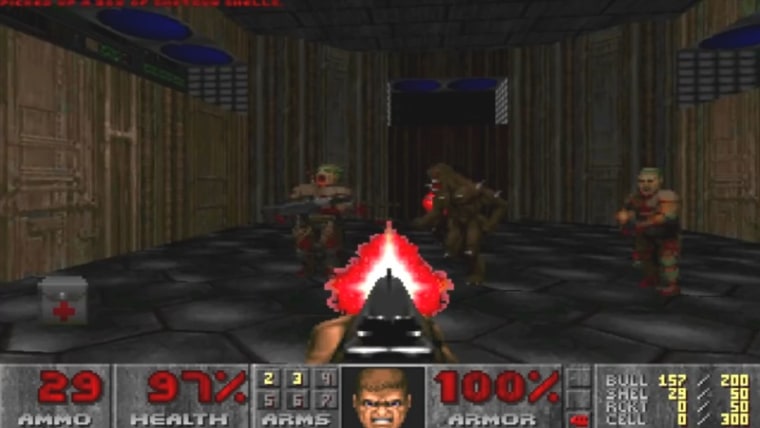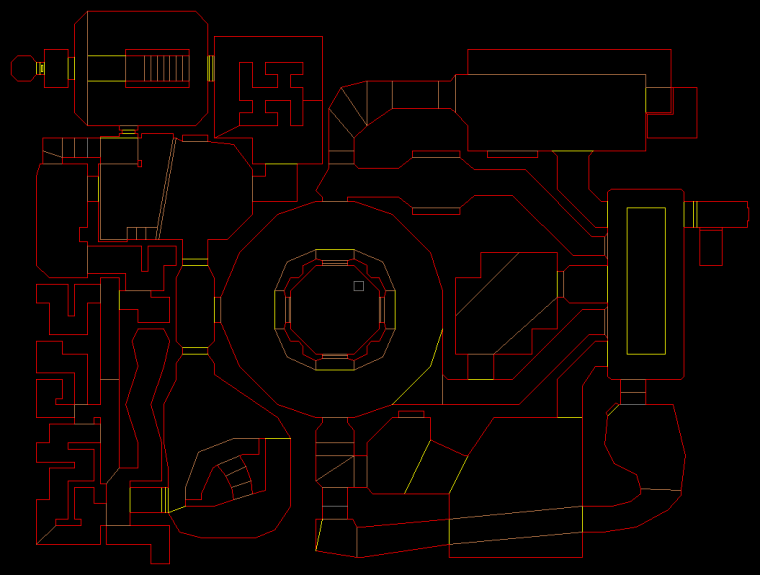Twenty years ago Tuesday, id Software released "Doom," and the world of gaming has never been the same. While it wasn't the first shooter, it was inarguably one of the most influential, kicking off a new tradition both of complexity of gameplay — and of highly stylized, graphic violence.
"We fully expect to be the number one cause of decreased productivity in businesses around the world," boasted an id press release ahead of the game's release. It's fair to say "Doom" created something like that level of distraction in homes and offices alike.
Those old enough may remember getting the shareware version of "Doom," (subtitled "Knee Deep in the Dead") which ran on DOS, on a stack of floppy disks or downloading it via modem from a local bulletin board system. What awaited players inside that 2-megabyte package would totally eclipse the experience they'd had in other first-person games like "Battlezone" and id's own "Wolfenstein 3D."
"Doom" soon found its way onto record numbers of computers, and the company was raking in $100,000 per day from $9 shareware purchases — and the free first episode was installed on millions of computers. It was so popular that Microsoft commissioned a port of the game for Windows 95, with then-CEO Bill Gates even appearing in a video promoting the game and Microsoft's new operating system.
Estimates vary, but the game had sold at least 2 or 3 million copies total by 1999 (massive numbers for the nascent days of PC gaming), and the free first episode has been installed on perhaps 10 times that many machines, if not more.

Not everyone was enthusiastic. The level of gore and violence was unprecedented, and the game was full of satanic symbols and hellish imagery. Parents worldwide deplored "Doom," and many a young gamer was forced to play only when home alone. Further controversy was stirred up when the perpetrators of the 1999 Columbine High School shootings were revealed to have been fans of the game.

But it was the popularity that brought about the controversy, not vice versa, and game developers have for years pointed out the huge advances in game design that accompanied "Doom"'s provocative visuals. The sprawling, labyrinthine levels were meticulously planned out and populated densely with a variety of enemies, secrets and items. Its multiplayer was likewise revolutionary, infamously clogging networks as players hosted games on office and university servers.
In addition to the game itself, "Doom" provided a free set of tools for "modding" the game, allowing players to create new levels, creatures, or even entirely unique games. The most famous of these, based on the movie "Aliens," coined the term "total conversion," since the mod left nothing of the original game unchanged.
Naturally, "Doom" was followed by a number of sequels and expansion packs, the most recent of which is 2004's "Doom 3"; "Doom 4" was reportedly in development, but whether that project will continue following Doom mastermind John Carmack's departure from id is anyone's guess.
You can play "Doom" today, if you like, and although the original episodes still cost money, you can download the shareware version for free and drop in any of thousands of user-created levels and episodes. Doomworld hosts many of these, as well as versions of the game for nearly every platform ever created.
The impact "Doom" had on gaming is difficult to overstate. If you've never played it, there's no time like the present — but be warned, it's no cakewalk or scripted, guided tour like so many games today. The maze-like levels and punishing difficulty mean "Doom" is just as hard today as it was in 1993 — and just as good.
Devin Coldewey is a contributing writer for NBC News Digital. His personal website is coldewey.cc.
